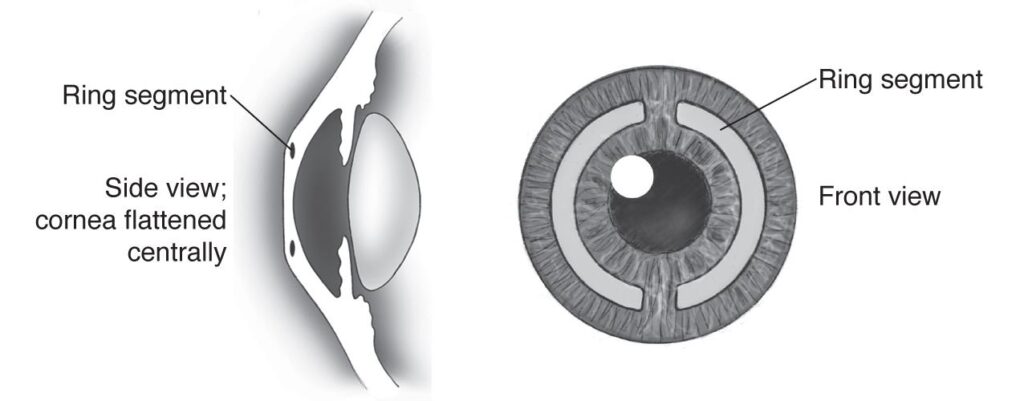Corneal inlays and intrastromal corneal ring segments (ICRS) have emerged as effective surgical treatments for keratoconus, a progressive eye condition that causes the cornea to thin and bulge. The Khanna Vision Institute, a leading provider of advanced eye care solutions, has pioneered the use of these innovative techniques to help patients with keratoconus improve their vision and quality of life. Corneal inlays are small, lens-like devices that are surgically implanted into the cornea to reshape its curvature and correct refractive errors. By strategically placing the inlay, the Khanna Vision Institute’s team of experienced surgeons can flatten the cornea, reducing the visual distortions associated with keratoconus. This minimally invasive procedure typically takes less than an hour and can provide patients with a significant improvement in their visual acuity.
Intrastromal corneal ring segments (ICRS), on the other hand, are crescent-shaped inserts that are placed within the corneal stroma, the middle layer of the cornea. By positioning these segments, the Khanna Vision Institute’s specialists can flatten the corneal curvature and stabilize the shape of the eye, effectively managing the progression of keratoconus. ICRS procedures are also relatively quick, with a recovery time that allows patients to return to their daily activities in a matter of days.

Indications
ICRS are typically recommended for keratoconus patients who:
Have mild to moderate keratoconus.
Are experiencing progressive keratoconus where other treatments, such as contact lenses, are inadequate.
Are not yet candidates for more invasive procedures like corneal transplants.
Desire a reduction in dependence on corrective lenses.
Procedure at Khanna Vision Institute
Preoperative Evaluation: A detailed eye examination, including corneal topography and pachymetry, is conducted to determine the severity of keratoconus and plan the surgery. Personalized treatment plans are developed based on individual corneal maps.
Anesthesia: The procedure is performed under local anesthesia using numbing eye drops to ensure patient comfort.
Creating Corneal Channels: Using a femtosecond laser or a mechanical device, precise channels are created within the corneal stroma where the ring segments will be inserted.
Insertion of Ring Segments: The ICRS are carefully inserted into the pre-created channels. These segments flatten the cornea and correct its irregular shape, which is characteristic of keratoconus.
Postoperative Care: After the procedure, patients are prescribed antibiotic and anti-inflammatory eye drops to prevent infection and reduce inflammation. Follow-up visits are scheduled to monitor the healing process and ensure proper positioning of the ring segments.
Benefits of ICRS at Khanna Vision Institute
Minimally Invasive: The ICRS procedure is less invasive compared to corneal transplants, with a quicker recovery time and less risk.
Reversibility: The ring segments can be removed or adjusted if necessary.
Stabilization of Keratoconus: ICRS help stabilize the corneal structure and can slow the progression of keratoconus.
Improved Vision: Many patients experience significant improvements in visual acuity and reduced refractive errors.
Risks and Considerations
Infection: Although rare, there is a risk of infection, which is mitigated with proper postoperative care.
Displacement: There is a potential for the ring segments to shift, which might require additional adjustments or surgery.
Visual Disturbances: Some patients may experience glare, halos, or night vision issues.
Effectiveness: ICRS may be less effective in advanced keratoconus or in cases with significant corneal scarring.
Both corneal inlays and ICRS have demonstrated excellent outcomes in the treatment of keratoconus, with the Khanna Vision Institute’s patients reporting enhanced visual clarity, reduced glare and halos, and improved overall visual function. These advanced surgical techniques, combined with the expertise of the Institute’s team, offer a compelling solution for individuals struggling with the debilitating effects of this corneal disorder.